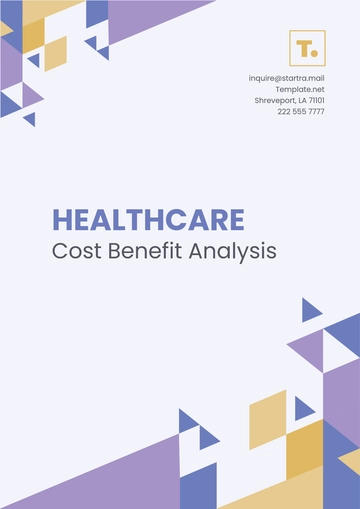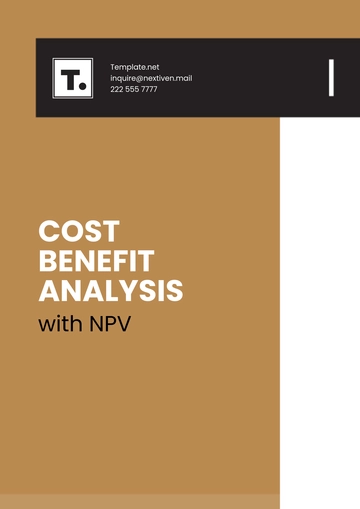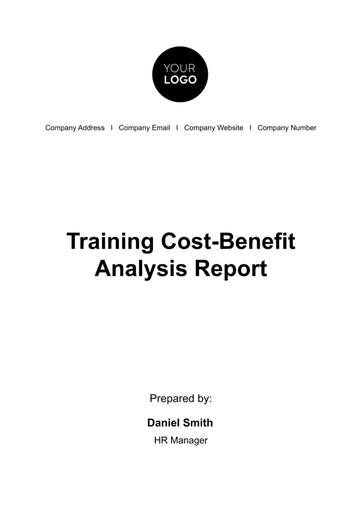Free Agriculture Labor Cost Analysis

I. Introduction
The purpose of this Agriculture Labor Cost Analysis is to meticulously evaluate and track the labor costs associated with [Your Company Name] agricultural operations. By understanding these costs, we aim to improve budgeting accuracy, enhance productivity, and identify potential areas for cost savings. This analysis covers various agricultural activities over a specified time frame, encompassing different types of labor and wage rates. Our goal is to provide a comprehensive overview of labor costs to aid in informed decision-making and efficient resource allocation.
II. Overview of Agricultural Activities
[Your Company Name] agricultural operations involves a series of critical activities that are essential for the successful cultivation and harvesting of crops. Each activity plays a vital role in the overall farming process, and understanding the labor requirements for these activities is crucial for effective cost management.
Land Preparation: This involves plowing, leveling, and preparing the soil.
Planting: This includes the sowing of seeds or transplanting seedlings.
Irrigation: Regular watering of crops to ensure adequate moisture for growth.
Weeding: Removal of weeds to prevent competition with crops for nutrients.
Fertilizing: Application of fertilizers to enhance soil fertility and crop yield.
Pest Control: Managing pests through various methods to protect crops.
Harvesting: Collecting mature crops from the fields.
Post-Harvest Processing: Cleaning, sorting, and packaging of harvested crops for market.
Timeframe of Activities
Activity | Timeframe |
|---|---|
Land Preparation | January - February |
Planting | March - April |
Irrigation | April - September |
Weeding | May - August |
Fertilizing | March - July |
Pest Control | April - September |
Harvesting | October - November |
Post-Harvest Processing | November - December |
III. Labor Categories
Our agricultural workforce is composed of various types of labor, each contributing uniquely to our operations. Understanding the roles and classifications of these labor categories helps us in accurate cost analysis and efficient workforce management.
Job Title | Type of Labor |
|---|---|
Farm Manager | Permanent |
Field Laborer | Seasonal |
Machine Operator | Permanent |
Irrigation Specialist | Temporary |
Pest Control Worker | Seasonal |
Harvest Worker | Temporary |
IV. Wage Rates
The wage rates for our labor categories vary based on the type of labor and the specific role. This section provides a detailed overview of the hourly rates, overtime rates, and additional benefits provided to our workforce.
Labor Category | Hourly Rate | Overtime Rate | Benefits |
|---|---|---|---|
Permanent | $15.00 | $22.50 | Health insurance, PTO |
Seasonal | $12.00 | $18.00 | Housing allowance |
Temporary | $10.00 | $15.00 | Meals during shifts |
V. Labor Hours
Estimating the labor hours required for each activity versus the actual hours worked provides insight into labor efficiency and helps identify areas for improvement. This section compares the estimated and actual labor hours for our key activities.
Activity | Estimated Hours | Actual Hours |
|---|---|---|
Land Preparation | 200 | 220 |
Planting | 150 | 140 |
Irrigation | 300 | 310 |
Weeding | 180 | 200 |
Fertilizing | 100 | 95 |
Pest Control | 120 | 130 |
Harvesting | 250 | 270 |
Post-Harvest Processing | 150 | 160 |
The analysis of the labor hours reveals a close alignment between estimated and actual hours for most activities, indicating efficient planning and execution. However, activities such as Land Preparation and Harvesting show a slight increase in actual hours, suggesting the need for closer monitoring and potential adjustments in future labor allocation.
VI. Cost Calculation
The labor cost for each agricultural activity is calculated using the formula: Labor Cost = Hours Worked x Wage Rate. This section presents the total labor cost for each activity based on the actual hours worked and the corresponding wage rates.
Activity | Actual Hours | Wage Rate | Total Labor Cost |
|---|---|---|---|
Land Preparation | 220 | $15.00 | $3,300.00 |
Planting | 140 | $12.00 | $1,680.00 |
Irrigation | 310 | $10.00 | $3,100.00 |
Weeding | 200 | $12.00 | $2,400.00 |
Fertilizing | 95 | $15.00 | $1,425.00 |
Pest Control | 130 | $12.00 | $1,560.00 |
Harvesting | 270 | $10.00 | $2,700.00 |
Post-Harvest Processing | 160 | $15.00 | $2,400.00 |
VII. Analysis of Variances
This section compares the budgeted labor costs against the actual labor costs to identify any variances. Understanding these variances helps us to adjust future labor cost estimations and improve budgeting accuracy.
Activity | Budgeted Cost | Actual Cost | Variance |
|---|---|---|---|
Land Preparation | $3,000.00 | $3,300.00 | $300.00 |
Planting | $1,800.00 | $1,680.00 | -$120.00 |
Irrigation | $3,000.00 | $3,100.00 | $100.00 |
Weeding | $2,160.00 | $2,400.00 | $240.00 |
Fertilizing | $1,500.00 | $1,425.00 | -$75.00 |
Pest Control | $1,440.00 | $1,560.00 | $120.00 |
Harvesting | $2,500.00 | $2,700.00 | $200.00 |
Post-Harvest Processing | $2,250.00 | $2,400.00 | $150.00 |
The analysis of variances indicates that most activities had slight cost overruns, with Land Preparation and Harvesting showing the highest variances. These overruns may be attributed to unforeseen challenges or inefficiencies. Conversely, activities like Planting and Fertilizing had lower actual costs than budgeted, reflecting more efficient labor utilization.
VIII. Efficiency Metrics
Efficiency metrics help us gauge the productivity of our labor force and the cost-effectiveness of our operations. Key metrics include labor cost per unit of output and productivity per labor hour.
Metric | Value |
|---|---|
Labor Cost per Hectare | $150.00 |
Labor Cost per Ton | $200.00 |
Output per Labor Hour | 0.75 tons per hour |
The efficiency metrics reveal that our labor cost per hectare and per ton are within acceptable ranges for our operations. Additionally, the output per labor hour indicates that our workforce is achieving satisfactory productivity levels. These metrics provide a benchmark for future performance assessments and highlight areas for potential improvement.
IX. Recommendations
To optimize labor costs and improve efficiency, we propose the following recommendations:
Implement Regular Training Programs: Enhance the skills and productivity of our labor force through continuous training.
Adopt Labor-Saving Technologies: Invest in mechanization and automation to reduce labor dependency for certain activities.
Optimize Labor Allocation: Reassess and adjust labor allocation based on actual needs and past performance to minimize cost overruns.
Improve Monitoring and Reporting: Establish more robust monitoring and reporting mechanisms to promptly identify and address inefficiencies.
Conduct Periodic Cost Reviews: Regularly review and update labor cost estimates to reflect current market conditions and operational realities.
In conclusion, this Agriculture Labor Cost Analysis provides a detailed assessment of our labor costs, highlighting areas of efficiency and potential improvement. By implementing the recommended strategies, we can better manage our labor expenses, enhance productivity, and ensure the sustainability of our agricultural operations.
- 100% Customizable, free editor
- Access 1 Million+ Templates, photo’s & graphics
- Download or share as a template
- Click and replace photos, graphics, text, backgrounds
- Resize, crop, AI write & more
- Access advanced editor
Explore the Agriculture Labor Cost Analysis Template on Template.net. This editable and customizable tool simplifies financial assessments, detailing labor categories, wage rates, and hours. Easily adjust figures to reflect seasonal adjustments and operational changes, ensuring accurate budgeting and cost management in agricultural operations.=





























